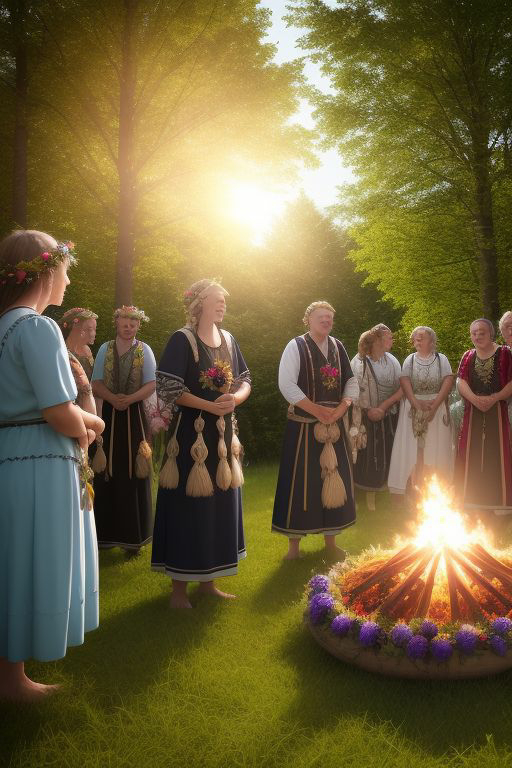A History of Litha and Midsummer
Litha, also known as Midsummer or the Summer Solstice, is an ancient festival celebrated by various cultures around the world. Litha has its roots in ancient agricultural societies that heavily relied on the Sun for their livelihoods. The festival marks the peak of the Sun's power and the longest day of the year. Celtic mythology associates Litha with the Oak King, representing the waxing power of the Sun. Bonfires were lit during Litha to honor the Sun's strength and ensure abundant harvests. In Norse traditions, the Solstice was celebrated with bonfires, feasts, and ceremonies dedicated to Freyr, the Fertility God.
Where does the name Litha Come from?
The name "Litha" is derived from Old English and has its origins in the Anglo-Saxon calendar. The term "Litha" is believed to be related to the word "liþa," which translates to "gentle" or "calm" in Old English. It refers to the period of the Summer Solstice when the Sun reaches its highest point in the sky and the day is at its longest. The term gained popularity among modern Pagan and Wiccan communities as they sought to reclaim and revive ancient traditions and festivals. Today, Litha is widely recognized and celebrated as the name for the festival that marks the Summer Solstice.
Litha and the Wheel of the Year
Litha is part of the Wheel of the Year, a cycle of seasonal celebrations observed by modern Pagan and Wiccan communities. It represents the changing seasons and the eternal cycle of life, death, and rebirth. Litha stands opposite to Yule, the Winter Solstice, symbolizing the balance between light and darkness. It is a time to celebrate the fullness of life and embrace the energy of the Sun.
Throughout history, Litha has been accompanied by various customs and rituals. Gathering medicinal herbs and plants believed to be more potent during this time is a common practice. These herbs are used in rituals and potions for health and protection. Another tradition is the construction of sunwheels, which are wheels adorned with flowers and set on fire. Rolling the wheel down a hill signifies the descent of the Sun and the turning of the Wheel of Life.
Litha and Midsummer
Additionally, Litha is often associated with Midsummer, a celebration that extends beyond the Pagan and Wiccan traditions. Midsummer festivities are observed in many cultures around the world, including Scandinavian countries where it holds a prominent place in their cultural heritage. Midsummer dances, bonfires, and feasts are integral parts of these celebrations, often accompanied by folklore and traditional rituals that honor the Sun's energy and the abundance of nature during this time.
In modern times, Litha is celebrated by Pagans, Wiccans, and nature-based Spiritual communities. Many gather at ancient sacred sites, such as Stonehenge, to witness the Sunrise and engage in Solstice ceremonies. Private rituals in natural settings are also common, where individuals connect with the Earth and embrace the energy of the Sun. Litha is a time for community, feasting, music, dancing, and expressing gratitude for nature's abundance.
The history of Litha reveals its deep connections to ancient agricultural societies and their reliance on the Sun's power. Celebrated as part of the Wheel of the Year, Litha symbolizes the balance between light and darkness. Throughout history, customs such as bonfires, herb gathering, and the construction of sunwheels have marked this festival. Today, Litha continues to be celebrated by various communities, with gatherings at sacred sites and private rituals in natural settings. Litha serves as a reminder of our connection with nature and the cycles of life. Additionally, Midsummer celebrations add cultural richness and diversity to the tapestry of Litha festivities.






Comments
Post a Comment